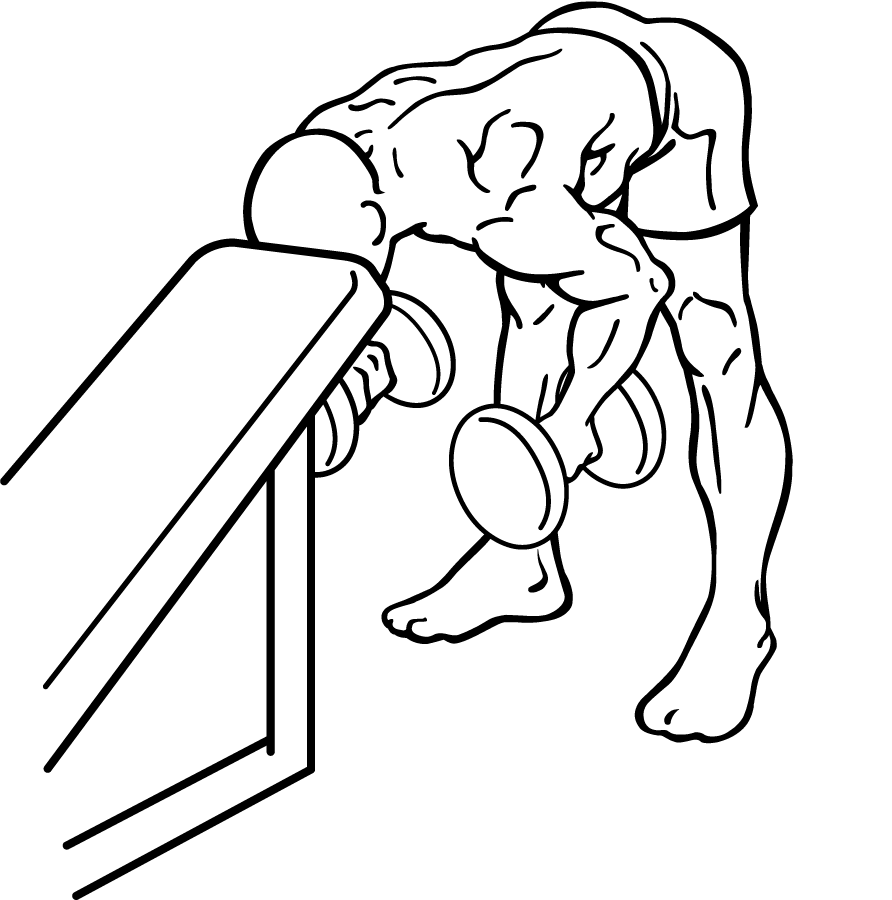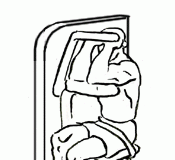Last Updated on September 24, 2014
Strengthening the shoulders is crucial for overall upper body stability and aesthetics. One of the most effective exercises for targeting the rear deltoids is the Bent Over Rear Deltoid Raise with Head on Bench. This exercise not only enhances shoulder strength but also improves posture and reduces the risk of injuries. In this blog, we will delve into the details of this exercise, its benefits, step-by-step instructions, tips for perfecting your form, and variations to keep your workout routine dynamic and engaging.
Understanding the Bent Over Rear Deltoid Raise
The Bent Over Rear Deltoid Raise with Head on Bench is a targeted strength training exercise focusing primarily on the posterior deltoids, which are often neglected in many workout routines. This exercise also engages other muscles such as the rhomboids, trapezius, and rotator cuff muscles, contributing to a well-rounded shoulder workout.
Benefits of the Exercise
- Targeted Muscle Engagement: This exercise specifically targets the rear deltoids, helping to balance shoulder development and improve overall shoulder aesthetics.
- Improved Posture: Strengthening the rear deltoids can help counteract the effects of poor posture by pulling the shoulders back and aligning them properly.
- Injury Prevention: By strengthening the stabilizing muscles around the shoulder joint, this exercise can help prevent common shoulder injuries.
- Enhanced Athletic Performance: Strong shoulders contribute to better performance in various sports and physical activities that require upper body strength.
Step-by-Step Guide to Performing the Exercise
To perform the Bent Over Rear Deltoid Raise with Head on Bench effectively, follow these detailed steps:
- Setup: Begin by setting an incline bench at a comfortable angle. Position yourself so that your forehead rests on the bench. This setup helps stabilize your movements and ensures that your back remains parallel to the floor throughout the exercise.
- Starting Position: Stand with your feet shoulder-width apart. Draw your abs in to engage your core muscles. Grasp a dumbbell in each hand with your arms hanging straight down and elbows slightly bent. Ensure that your elbows are not locked to avoid unnecessary strain.
- Execution:
- Slowly raise the dumbbells out to your sides until they reach shoulder height. Focus on squeezing your shoulder blades together as you lift.
- Pause briefly at the top of the movement to maximize muscle engagement.
- Gradually lower the dumbbells back to the starting position with control.
- Repetition: Repeat this movement for a set number of repetitions, typically 8-12 reps per set depending on your fitness level and goals.
Tips for Perfecting Your Form
Achieving proper form is essential for maximizing the benefits of this exercise while minimizing the risk of injury. Here are some tips to help you perfect your technique:
- Maintain a Straight Back: Ensure that your back remains straight and parallel to the floor throughout the exercise. Avoid arching or rounding your back as this can lead to strain or injury.
- Control Your Movements: Perform each repetition slowly and with control. Avoid using momentum to lift the weights as this reduces muscle engagement.
- Focus on Muscle Contraction: Concentrate on squeezing your rear deltoids at the top of each lift to enhance muscle activation.
- Breathing Technique: Inhale as you lower the weights and exhale as you lift them. Proper breathing helps maintain stability and focus during the exercise.
Variations and Modifications
To keep your workouts varied and challenging, consider incorporating these variations of the Bent Over Rear Deltoid Raise:
- Seated Bent Over Rear Deltoid Raise: Perform this exercise seated on a bench with no back support. This variation reduces lower back strain and isolates the rear deltoids even more.
- Cable Machine Rear Delt Fly: Use a cable machine instead of dumbbells for constant tension throughout the movement, which can enhance muscle engagement.
- Resistance Band Rear Delt Fly: Incorporate resistance bands for a portable option that provides variable resistance throughout the range of motion.
Integrating into Your Workout Routine
Incorporating this exercise into your regular workout routine can yield significant benefits for shoulder strength and stability. Here’s how you can integrate it effectively:
- Frequency: Aim to include rear deltoid exercises like this one 1-2 times per week as part of a balanced upper body or shoulder workout routine.
- Complementary Exercises: Pair with other shoulder exercises such as overhead presses, lateral raises, and front raises for comprehensive shoulder development.
- Progression: Gradually increase weight or repetitions over time as you build strength and confidence in your form.
The Bent Over Rear Deltoid Raise with Head on Bench is an excellent addition to any fitness routine focused on building strong, stable shoulders. By following proper form, integrating variations, and consistently challenging yourself, you can achieve significant improvements in both strength and posture. Remember that consistency is key; make this exercise a staple in your workout regimen to enjoy its full range of benefits.Whether you’re an athlete looking to enhance performance or someone seeking better posture and shoulder health, mastering this exercise will undoubtedly contribute positively to your fitness journey. Keep practicing, stay mindful of your form, and embrace the challenge as you work towards stronger shoulders!


Exercise images by Everkinetic.






